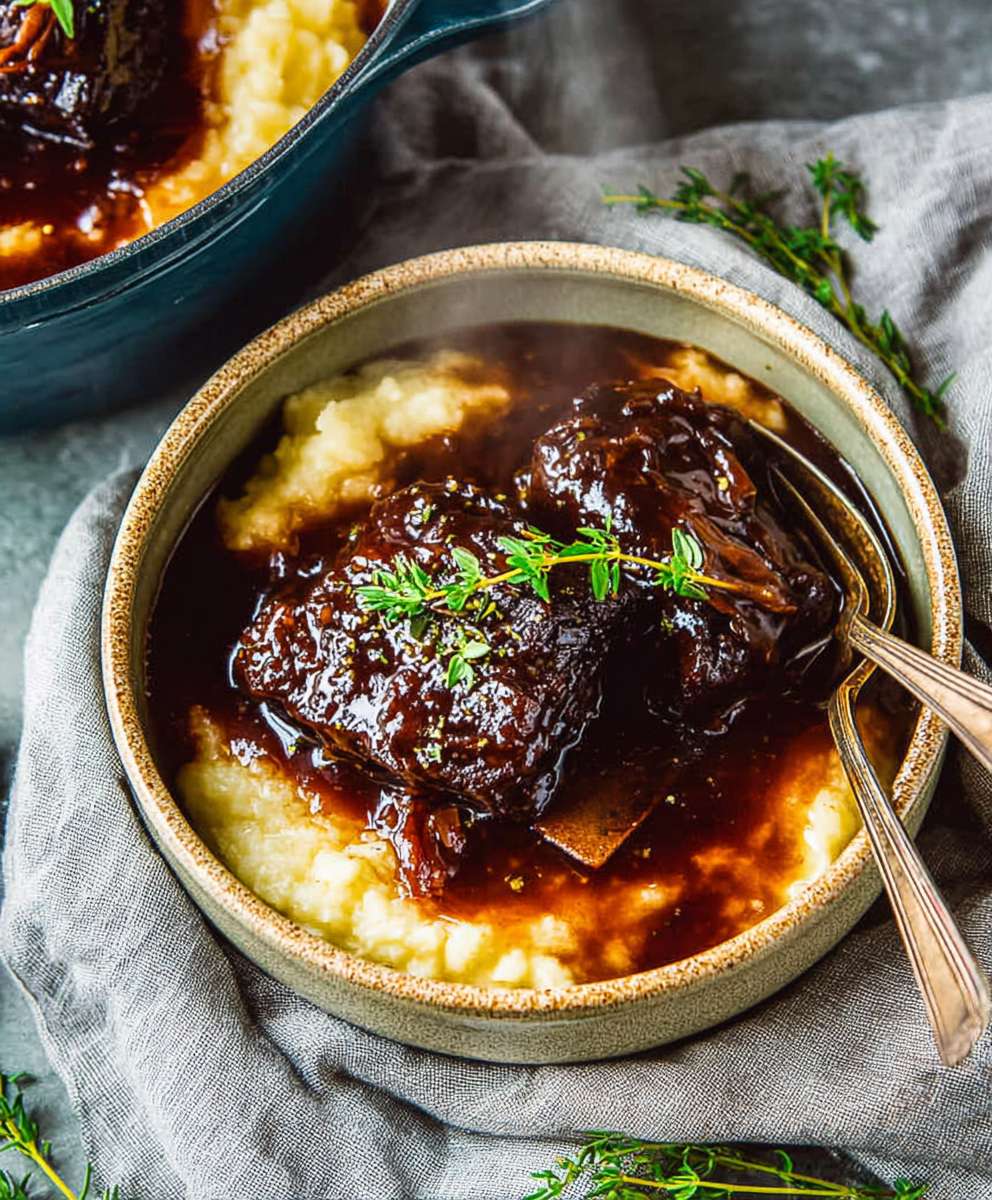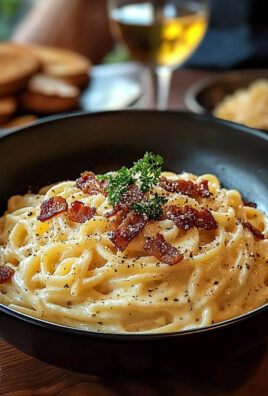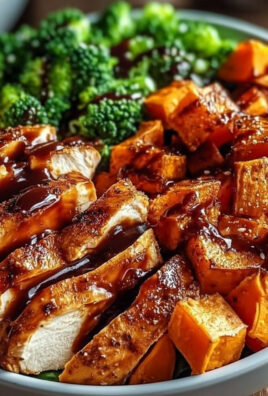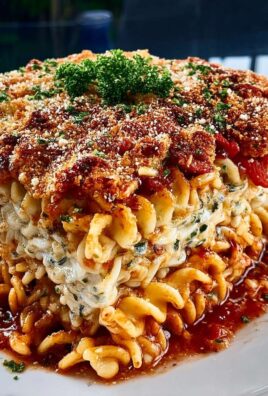Red wine braised short ribs – just the name conjures up images of cozy evenings, rich aromas, and melt-in-your-mouth tenderness, doesn’t it? I’m thrilled to share my absolute favorite recipe for this incredibly satisfying dish, one that’s guaranteed to impress your family and friends. Forget everything you thought you knew about complicated cooking; this recipe is surprisingly straightforward, delivering restaurant-quality results with minimal effort.
Braised short ribs have a long and storied history, evolving from humble peasant fare to a sophisticated culinary delight. The braising technique itself, slow-cooking tough cuts of meat in liquid, has been used for centuries to transform inexpensive ingredients into flavorful and tender meals. The addition of red wine elevates the dish, imparting a depth of flavor that’s simply irresistible. In many cultures, braised meats are associated with celebrations and gatherings, symbolizing abundance and warmth.
What is it about red wine braised short ribs that makes them so universally loved? It’s the perfect combination of textures: the fork-tender meat practically falls off the bone, while the braising liquid transforms into a luscious, deeply flavorful sauce. The rich, savory taste, enhanced by the fruity notes of the red wine, is a true indulgence. Plus, the fact that it’s largely a hands-off cooking process makes it ideal for busy weeknights or elegant weekend dinners. You can prepare most of the components ahead of time, leaving you free to relax and enjoy the company of your guests. So, are you ready to experience the magic of perfectly braised short ribs? Let’s get started!
Ingredients:
- 4 lbs bone-in beef short ribs, about 2-3 inches thick
- 2 tablespoons olive oil
- 1 large yellow onion, chopped
- 2 carrots, peeled and chopped
- 2 celery stalks, chopped
- 4 cloves garlic, minced
- 1 (750ml) bottle dry red wine (such as Cabernet Sauvignon, Merlot, or Chianti)
- 4 cups beef broth
- 2 tablespoons tomato paste
- 2 sprigs fresh rosemary
- 2 sprigs fresh thyme
- 1 bay leaf
- 1 tablespoon balsamic vinegar
- Salt and freshly ground black pepper to taste
- 2 tablespoons all-purpose flour (optional, for thickening sauce)
- Fresh parsley, chopped, for garnish (optional)
Preparing the Short Ribs:
- Season the short ribs generously. Liberally season the short ribs with salt and freshly ground black pepper on all sides. Don’t be shy with the seasoning – this is crucial for developing a rich, flavorful crust.
- Sear the short ribs. Heat the olive oil in a large, heavy-bottomed pot or Dutch oven over medium-high heat. Once the oil is shimmering and hot, carefully add the short ribs in a single layer, being careful not to overcrowd the pot. You may need to do this in batches. Sear the short ribs for about 3-4 minutes per side, until they are deeply browned and caramelized. This searing process is essential for developing a rich, complex flavor in the final dish. The browned bits on the bottom of the pot, called fond, will also contribute to the sauce’s depth of flavor.
- Remove the short ribs. Once the short ribs are nicely browned, remove them from the pot and set them aside on a plate. Don’t worry if they’re not fully cooked through at this point; they will finish cooking in the braising liquid.
Building the Aromatic Base:
- Sauté the vegetables. Add the chopped onion, carrots, and celery to the pot. Cook over medium heat, stirring occasionally, until the vegetables are softened and slightly caramelized, about 8-10 minutes. This process, known as mirepoix, creates a flavorful foundation for the braising liquid. The vegetables will release their natural sugars as they cook, adding sweetness and depth to the sauce.
- Add the garlic. Add the minced garlic to the pot and cook for another minute, until fragrant. Be careful not to burn the garlic, as it can become bitter.
- Deglaze the pot. Pour in the red wine, scraping up any browned bits from the bottom of the pot with a wooden spoon. These browned bits, the fond, are packed with flavor and will add richness to the sauce. Let the wine simmer for 5-7 minutes, allowing it to reduce slightly and concentrate its flavors.
- Add the remaining ingredients. Stir in the beef broth, tomato paste, rosemary sprigs, thyme sprigs, and bay leaf. Bring the mixture to a simmer.
Braising the Short Ribs:
- Return the short ribs to the pot. Gently nestle the seared short ribs back into the pot, ensuring they are mostly submerged in the braising liquid. If necessary, add a little more beef broth to cover them.
- Braise in the oven. Cover the pot tightly with a lid and transfer it to a preheated oven at 325°F (160°C). Braise for 3-3.5 hours, or until the short ribs are fork-tender and easily fall off the bone. The braising time may vary depending on the size and thickness of the short ribs. Check the ribs periodically to ensure the liquid hasn’t evaporated completely; add more broth if needed.
- Braise on the stovetop (alternative). If you don’t want to use the oven, you can braise the short ribs on the stovetop. Bring the braising liquid to a gentle simmer, then reduce the heat to low, cover the pot tightly, and simmer for 3-3.5 hours, or until the short ribs are fork-tender. Check the liquid level periodically and add more broth if needed.
Finishing the Sauce:
- Remove the short ribs. Once the short ribs are tender, carefully remove them from the pot and set them aside on a plate. Cover them loosely with foil to keep them warm.
- Strain the sauce (optional). For a smoother sauce, strain the braising liquid through a fine-mesh sieve into a saucepan. Discard the solids. If you prefer a rustic sauce, you can skip this step.
- Reduce the sauce. Bring the sauce to a simmer over medium heat and cook, uncovered, for 15-20 minutes, or until it has reduced and thickened slightly. Skim off any excess fat that rises to the surface.
- Thicken the sauce (optional). If you prefer a thicker sauce, you can thicken it with a slurry of flour and water. In a small bowl, whisk together 2 tablespoons of all-purpose flour with 2 tablespoons of cold water until smooth. Gradually whisk the slurry into the simmering sauce and cook for another 2-3 minutes, or until the sauce has thickened to your desired consistency.
- Finish the sauce. Stir in the balsamic vinegar and season with salt and pepper to taste. The balsamic vinegar adds a touch of acidity that balances the richness of the sauce.
Serving:
- Return the short ribs to the sauce. Gently return the short ribs to the sauce and heat through.
- Serve. Serve the red wine braised short ribs over mashed potatoes, polenta, or creamy risotto. Garnish with fresh parsley, if desired. The short ribs are also delicious served with roasted vegetables or a simple green salad.
Tips for Success:
- Choose the right cut of meat. Bone-in short ribs are the best choice for braising, as the bones add flavor and richness to the sauce. Look for short ribs that are well-marbled with fat, as this will help keep them moist and tender during the long braising process.
- Don’t skip the searing step. Searing the short ribs is crucial for developing a deep, rich flavor. The browned bits on the bottom of the pot, called fond, will add complexity to the sauce.
- Use a good quality red wine. The red wine is a key ingredient in this dish, so choose a dry red wine that you enjoy drinking. Cabernet Sauvignon, Merlot, and Chianti are all good choices.
- Braise low and slow. Braising the short ribs at a low temperature for a long period of time will result in the most tender and flavorful meat.
- Don’t be afraid to experiment with the flavors. You can add other vegetables to the braising liquid, such as mushrooms, parsnips, or turnips. You can also add different herbs and spices, such as bay leaves, peppercorns, or juniper berries.
- Make it ahead of time. Red wine braised short ribs are even better the next day, as the flavors have had time to meld together. You can make the dish a day or two in advance and store it in the refrigerator. Reheat gently before serving.
Variations:
- Add mushrooms. Add 8 ounces of sliced cremini or button mushrooms to the pot along with the onions, carrots, and celery.
- Add bacon. Cook 4 slices of bacon in the pot before searing the short ribs. Remove the bacon and set aside. Crumble the bacon and sprinkle it over the short ribs before serving.
- Add potatoes. Add 1 pound of peeled and cubed potatoes to the pot during the last hour of braising.
- Use a different type of wine. You can use other types of red wine, such as Pinot Noir or Zinfandel. You can also use a fortified wine, such as Port or Madeira.

Conclusion:
And there you have it! These red wine braised short ribs are truly a culinary experience you won’t want to miss. From the initial sear that locks in all those delicious juices to the slow braise that transforms tough meat into melt-in-your-mouth perfection, every step of this recipe is designed to deliver maximum flavor. The rich, complex sauce, infused with the deep notes of red wine and aromatic vegetables, is simply divine. It’s the kind of dish that makes you want to savor every single bite.
But why is this recipe a must-try? It’s more than just a meal; it’s an event. It’s the perfect centerpiece for a special occasion, a cozy Sunday supper, or even just a weeknight treat when you’re feeling a little fancy. The aroma alone, wafting through your kitchen as the short ribs braise, is enough to make your mouth water and your heart sing. And the taste? Well, that speaks for itself. The tender, fall-off-the-bone meat, bathed in that luscious red wine sauce, is an absolute symphony of flavors and textures.
Beyond the incredible taste, this recipe is also surprisingly versatile. While I’ve outlined my favorite method, feel free to experiment and make it your own. For serving suggestions, consider pairing these red wine braised short ribs with creamy mashed potatoes or polenta to soak up all that glorious sauce. A side of roasted root vegetables, like carrots and parsnips, adds a touch of sweetness and earthiness that complements the richness of the meat. Or, for a lighter option, serve them alongside a simple green salad with a bright vinaigrette.
Looking for variations? You could add a touch of balsamic vinegar to the braising liquid for an extra layer of complexity. Or, if you’re feeling adventurous, try incorporating some dried porcini mushrooms for an even deeper, more umami-rich flavor. A sprinkle of fresh herbs, like parsley or thyme, at the end adds a pop of freshness and visual appeal. Don’t be afraid to get creative and tailor the recipe to your own preferences.
I truly believe that anyone can make this recipe, regardless of their cooking experience. The instructions are clear and easy to follow, and the results are guaranteed to impress. So, what are you waiting for? Gather your ingredients, pour yourself a glass of red wine (the same one you’ll be using in the recipe, of course!), and get ready to embark on a culinary adventure.
I’m so excited for you to try this recipe and experience the magic of red wine braised short ribs for yourself. Once you do, I’d love to hear about your experience! Did you make any modifications? What did you serve them with? What did your family and friends think? Share your photos and stories in the comments below. I can’t wait to see what you create! Happy cooking!
Red Wine Braised Short Ribs: The Ultimate Guide
Tender, fall-off-the-bone beef short ribs braised in a rich red wine sauce with aromatic vegetables and herbs. Perfect served over mashed potatoes, polenta, or risotto.
Ingredients
Instructions
Recipe Notes
- Choose bone-in short ribs that are well-marbled with fat.
- Don’t skip the searing step for a deep, rich flavor.
- Use a good quality dry red wine that you enjoy drinking.
- Braise low and slow for the most tender and flavorful meat.
- Experiment with adding other vegetables, herbs, and spices.
- This dish is even better the next day, as the flavors meld together.




